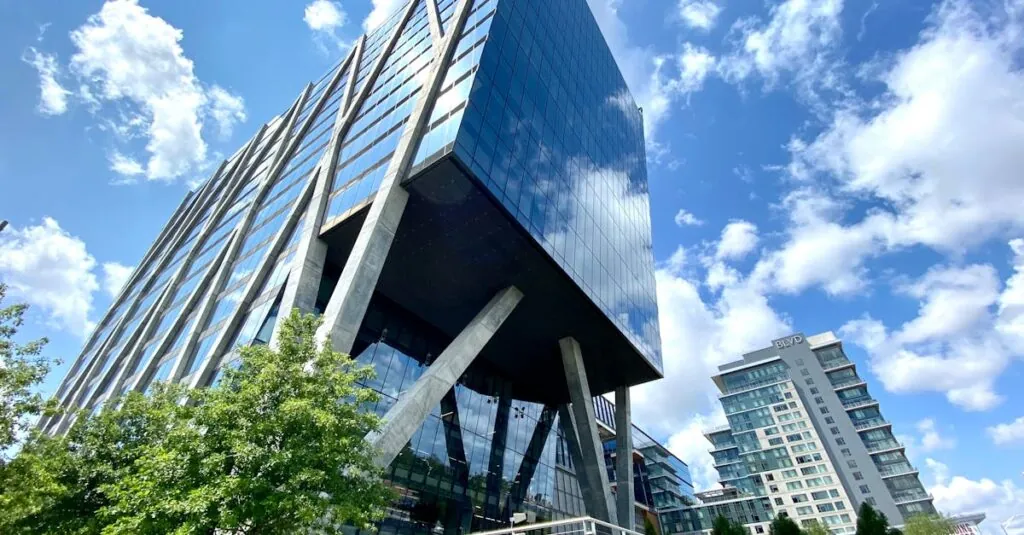Table of Contents
ToggleRetirement community living isn’t just about swapping a career for a comfy chair and a good book. It’s a vibrant lifestyle filled with new friendships, activities, and the chance to finally learn to play that ukulele. Imagine waking up to a day packed with yoga classes, art workshops, and maybe even a little friendly competition in bingo.
Gone are the days of solitary living; this is where fun meets convenience. From gourmet meals to social events, retirement communities offer a unique blend of comfort and excitement. Who knew that retirement could feel like a never-ending vacation? With so much to explore, it’s time to embrace this new chapter and discover the joys of living in a community designed just for them.
Overview of Retirement Community Living
Retirement community living offers a vibrant and fulfilling lifestyle for seniors. Engaging activities and social events foster new friendships, enriching daily life. Options for personal growth abound, such as picking up a new hobby or enjoying fitness classes.
Many communities provide gourmet meals, creating a culinary experience that exceeds standard dining. Residents often participate in organized outings that explore local attractions or cultural events.
Safety and convenience rank high among the benefits of retirement communities. On-site medical services and assistance with daily tasks ensure peace of mind.
With diverse options available, individuals can select communities that reflect their preferences and lifestyles. Some residents appreciate a focus on active living, while others enjoy quiet, peaceful environments.
Amenities commonly found in these communities include swimming pools, fitness centers, and game rooms. These facilities promote physical health and social interaction, crucial aspects of an enjoyable retirement.
Flexibility in accommodation types, from independent living to assisted living, caters to various needs. Residents often create a sense of belonging while enjoying independence.
Overall, retirement community living transforms this life stage into an exciting and socially engaging experience, contrary to outdated stereotypes. Understanding these elements encourages exploration of the vibrant senior living options available today.
Benefits of Retirement Community Living
Retirement community living offers numerous advantages that enhance the quality of life for its residents.
Social Interaction
Social interaction plays a vital role in retirement community living. Engaging in group activities fosters connections, enabling friendships to flourish. Organized events, such as game nights or book clubs, provide opportunities for residents to socialize and share interests. The supportive atmosphere encourages conversations, reducing feelings of loneliness. Furthermore, shared experiences create lasting bonds, turning neighbors into friends. Regular outings help connect residents with the wider community, enhancing overall social engagement. For many, these interactions contribute significantly to emotional well-being.
Maintenance-Free Lifestyle
Maintenance-free lifestyles liberate residents from daily chores. With housekeeping and lawn care services provided, individuals can focus on leisure rather than upkeep. This freedom allows more time for personal pursuits and hobbies, enriching daily life. Dining options feature chef-prepared meals, eliminating the need for cooking and grocery shopping. Additionally, on-site amenities may include wellness programs and fitness classes, promoting active living. Communities often anticipate residents’ needs, ensuring a hassle-free environment. Transitioning to such a lifestyle can lead to increased satisfaction and overall happiness.
Types of Retirement Communities
Retirement communities offer diverse living arrangements tailored to different needs and lifestyles. Each type accommodates varying degrees of assistance, social interaction, and independence.
Independent Living
Independent living environments cater to seniors who desire autonomy without the responsibilities of home maintenance. Residents typically enjoy private apartments with access to communal spaces for socializing and activities. Frequent amenities include fitness centers, swimming pools, and dining options that facilitate healthy lifestyles and engagement. These communities focus on fostering vibrant social connections, allowing seniors to form friendships through organized events such as art classes, dance nights, or book clubs. The lifestyle resembles that of a resort, with diverse recreational opportunities available to enrich daily life.
Assisted Living
Assisted living communities provide support while promoting independence for seniors requiring help with daily tasks. Personal care services adapt to individual needs, including assistance with medication management, bathing, and mobility. Residents typically live in private or semi-private accommodations, ensuring comfort and privacy while remaining part of a social network. Nutritious meals serve as a focal point of community engagement, with shared dining rooms promoting interaction. Social activities like exercise classes, movie nights, and outings to local attractions enhance well-being and foster connections among residents.
Choosing the Right Retirement Community
Selecting a retirement community requires careful consideration of various factors. Residents benefit from understanding their personal needs and preferences before making a decision.
Factors to Consider
Location plays a crucial role in this selection process. Choosing a community near family or friends fosters connections. Additionally, amenities significantly influence comfort and lifestyle. Social activities, fitness options, and on-site services enrich daily living. Safety and security features also provide peace of mind for residents. Financial factors cannot be overlooked, as different communities offer a range of costs based on included services.
Questions to Ask
Asking the right questions aids in narrowing down options. Inquiring about residents’ daily activities reveals how active the community is. Understanding the flexibility of accommodations can demonstrate whether individual needs are met. Questions about healthcare services address potential medical needs. It’s beneficial to ask about community culture to ensure a good fit. Lastly, verifying the reputation of the community through reviews can provide accurate insight into residents’ experiences.
Challenges of Retirement Community Living
Retirement community living presents several challenges that residents may encounter. Adjusting to a new environment often proves difficult for individuals shifting from familiar surroundings to a communal setting.
Adjusting to a New Environment
New residents must adapt to changes in their daily routines and the dynamics of community life. Meeting new neighbors can turn overwhelming, as social expectations differ from what they might have experienced in their previous homes. Settling in may take time, which can lead to feelings of loneliness or isolation in the early stages. Community events and structured activities offer opportunities for connection, yet it may still take effort to forge deep relationships. Maintaining a sense of independence can also pose challenges during this transition.
Costs and Financial Considerations
Financial aspects of retirement communities warrant careful examination. Monthly fees typically cover various services, including meals, maintenance, and amenities. Residents need to understand the full extent of these costs, particularly how they align with their personal budgets. Upfront entrance fees might also exist, complicating financial planning. Evaluating potential increases in costs over time ensures that future expenses remain manageable. Individuals should highlight their financial needs and preferences in discussions with community representatives to make informed choices.
Conclusion
Retirement community living offers an enriching lifestyle filled with opportunities for connection and personal growth. Residents can enjoy a vibrant atmosphere that promotes social interaction and well-being. With various amenities and engaging activities available, this phase of life can feel like a continuous adventure rather than a time of solitude.
Choosing the right community is essential for maximizing the benefits of this lifestyle. By considering personal needs and preferences, individuals can find a place that feels like home. Embracing this new chapter can lead to fulfilling experiences that enhance happiness and satisfaction in daily life. Retirement is not just an end; it’s a chance to thrive in a supportive and dynamic environment.




